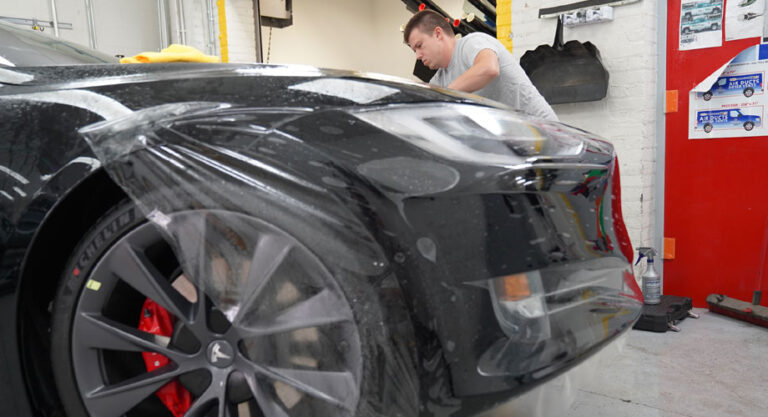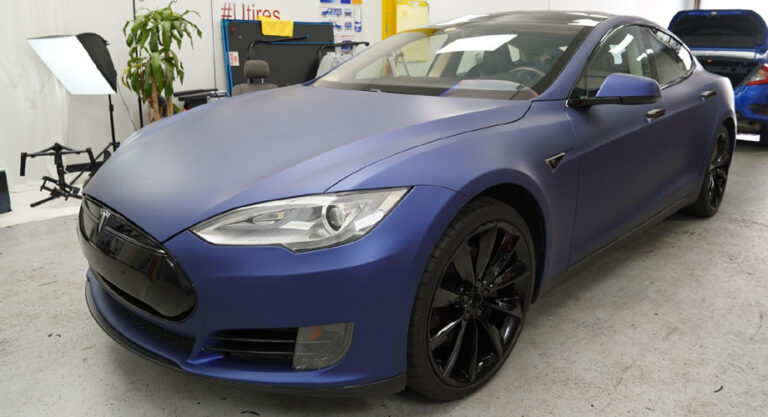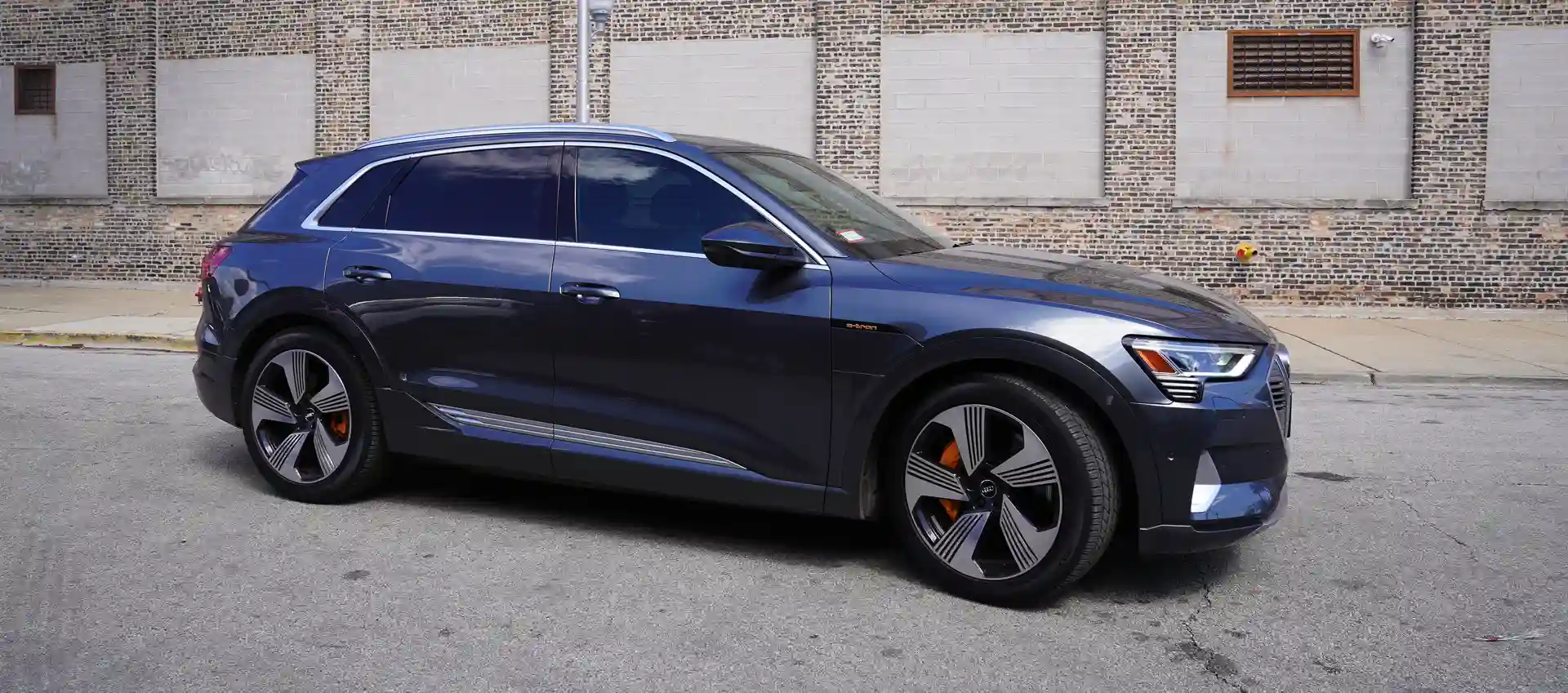





















































































































































































































Like every industry, the tinting business has its standards defined by law. Window tint percentages refer to VLT — visible light transmission of the car windows, which is directly connected to the safety of the driver, the passengers, and everybody else on the road.
As straightforward as legal window tint percentage is, there are some peculiarities to know. And, first of all, how dark tinted windows can be in your state. To make everything easy to remember, we created this cheat sheet for you.
Read this article before ordering your car window tint in one of our Chicago shops, or give a call to our 24/7 customer service at 773-455-0467 or 312-212-0493 if you have any questions left!

Window tinting laws: 5 key points to consider
Everything you need to know about window tint percentage can be found on the official U.S. Window Tint Laws site. Simply choose your state or go to the articles section.
1. Window tint darkness
First of all, you will learn that not only do different car windows have different tint percentage regulations but the vehicles too! Therefore, tint darkness for sedans would differ from vans and SUVs.
2. Window tint reflection
These are the older types of films that were used before a technologically advanced non-reflective tint was introduced to the market. Their purpose is to reflect the light coming into your car, reducing glare, heat, and harmful UV rays.
Today many states legally prohibit reflective tints application. For example, in Illinois, if you have reflective or mirrored tinting dual film on any of your car’s windows, you’ll get a ticket. But in Alabama, you can use no more than 20% reflective window tint.
3. Tinted windows colors
Ok, this is a tricky one. In Chicago, Illinois, where the headquarters and three of the Tinting Chicago shops are located, there are no legal limits on colored films application. In Texas, on the other hand, windshield tinting laws prohibit the use of red, blue, and amber colors. And in South Carolina red, yellow and amber tints aren’t permitted on any windows by state laws.
4. Manufacturer certificates
Some states allow car dealers and tinting shops to use uncertified films, some — don’t. Of course, it makes much more sense to legally control the quality and safety of a car’s window tint, but laws aren’t always righteous, aren’t they? You will find out that in West Virginia tint shops can only work with certified films, but, for example, the state of Illinois does not legally control this aspect.
But every respectable company that provides window tinting services will only work with high-quality products, manufactured by trustworthy brands. Only these products (and services) will have solid guarantees!
Here at Tinting Chicago (though located in Illinois), we have been testing certified films from the top manufacturers for more than 12 years. Right now we have chosen a few brands that we consider the best. For car window tinting we offer our clients films from the industry leaders — 3M and Rayno. All of their products are certified — and to get these certificates, tints undergo thorough inspections and prove to work impeccably by multiple hardcore tests.
5. Medical exemptions
For the drivers with particular medical conditions (sun allergies, UV intolerance, melanoma, lupus, etc.) state tint laws make exemptions. Mostly they are connected to the level of darkness of the films: these patients might require an extra shield from harmful UV rays or light! To be able to apply a darker window tint, a driver must obtain an official medical document, stating the condition. Depending on the state car window tint laws, these documents are valid for a certain period of time, for example, three years.
Tinting windows and VLT
VLT — Visible Light Transmittance (or Transmission) is the measurement defining the amount of visible light coming through the vinyl film to the car. The lower VLT is, the darker the film is.
The darkest shade of the film used in car window tinting is 5%. It blocks out 95% of the visible light! This dark tint is also called “limo tint” and can be hiding secrets (or just protecting the privacy) of limousine passengers.
The most common window film VLT on the market is 35%. That’s why, to avoid confusion, to create a comfortable cool environment inside of the car, and to offer a good level of heat, glare, and UV protection, we offer our Tinting Chicago customers an all-around 35% VLT tinting package (windshield not included). You can get it today with a discount. Just dial 773-455-0467 or 312-212-0493!
Some states allow legally tinted front/back passenger windows or windshield tint stripes with films of only 70% VLT. Many car owners will prefer a darker tint allowance, but it’s the state’s laws that dictate us the amount of light allowed in our cars!
Windshield tinting laws
Windshield tinting laws refer to the level of VLT (visible light transmission) allowed for windshields. And here you have to remember — in all of the U.S.A. it is absolutely illegal to tint the windshield with any percentage tint! Only a translucent film can be applied. In our Tinting Chicago shops you can order the top performance ceramic widow tint to protect your windshield from harmful UV rays, heat and glare.
The whole of the windshield must be absolutely transparent, allowing the driver to have a clear view of the road and the police officers — an unobstructed view of the inside of the car.
Windshield tint strip legal regulations
The only exemption is the application of a windshield tint strip across the top of a windshield. Its width can differ from state to state (4, 5, 6 inches, or the manufacturer’s as-1 line). And the level of its VLT will depend on a state too (in Illinois it can be of any darkness, in Hawaii, North Dakota, Ohio — 30% max, meaning that 70% of the light will be blocked out).
Only in Minnesota, New Jersey, and Pennsylvania no windshield tint allowed in any form or shape.
Front passenger window laws
Car owners have to keep in mind that every state has different rules when it comes to front-side window tinting. The spread of the legally allowed VLT is from 25% to 70%, and a lot of states allow films of any darkness on the front side windows. Here in Illinois, it is a “golden mean” of 35%.
Back window tinting laws
Similar situation as with the front windows: in some states, the VLT for back windows can be as low as 70%, and some states don’t care at all! For back tinted windows, a “golden middle” 35% rule is applied in Illinois.
Rear window tinting laws
Rear window tinting laws differ from state to state. For example, in Pennsylvania and Rhode Island VLT must not exceed 70% (allowing only 30% of light to come through), but in Arkansas tint percentage for rear windows can be as dark as 10% (meaning that 90% of light is blocked out).
In the state of Illinois where Tinting Chicago shops are located, the rear window tint percentage for sedans must not exceed 35%, but even the darkest tint is allowed for vans and SUVs.
Law: dual side mirrors
In most states, tinting laws require that your vehicle absolutely must have dual side mirrors in case the rear window is tinted.
Window tint laws for different types of vehicles
As we see from the previous paragraphs, different window tinting laws apply to different types of vehicles. Let’s see what the differences are.
The tinted windows of sedans
Auto window tinting law of your state will define the legal level of darkness of each of your sedan’s windows.
In Illinois, where our Tinting Chicago shops are located, the following rules are applied to the car windows tinted:
- Windshield — no tinting allowed, only 6 inches wide windshield tint strip of any VLT
- Front side windows — 35% VTL
- Backside windows — 35% VLT
- Rear window — 35% VLT
The tinted windows of vans and SUVs
Refer to the car window tinting laws of your state to find out the legal level of darkness of your van or SUV windows.
In the state of Illinois, films with the following levels of visual light transmittance should be used on tinted windows:
- Windshield — only non-reflective tint of 6 inches wide is allowed on the top part of the windshield
- Front side windows — 50% VTL
- Backside windows — any level of VLT
- Rear window — any level of VLT
Asked Questions See more
The darkest shade of the vinyl films for car tinted windows is 5%. It blocks out 95% of visible light and is also called “limo tint”. This window tint is illegal for both front and back passenger windows.
Yes, you can, but there would always be a slight difference in the film’s shade. Please pop into one of our three Tinting Chicago shops at 1402 N Rand Rd in Palatine; 3621 N, Harlem Ave or 2720 Unit B, W Grand Ave in Chicago our specialists will demonstrate to you the best matching samples.
Yes, you definitely can! This is the most common VLT (visual light transmittance) level that is both safe and comfortable to drive. That’s why the Tinting Chicago signature all-around 35% VLT tinting package (excluding the windshield) is one of the most popular among our customers. Dial 773-455-0467 or 312-212-0493 and book your application appointment now!
Windshield tinting is illegal in all states. Only a non-reflective tint stripe of 4, 5, or 6 inches can be applied to the top part of the windshield. The level of its darkness will be defined by state laws.
It depends on where you live. In the state of Illinois, where our Tinting Chicago shops are located, back windows tinted legal allowance for sedans is 35%, but for vans and SUVs back tinted windows can be of any darkness. But in case the SUV owners choose this option, their front windows must be tinted with at least 50% VLT tints.


























